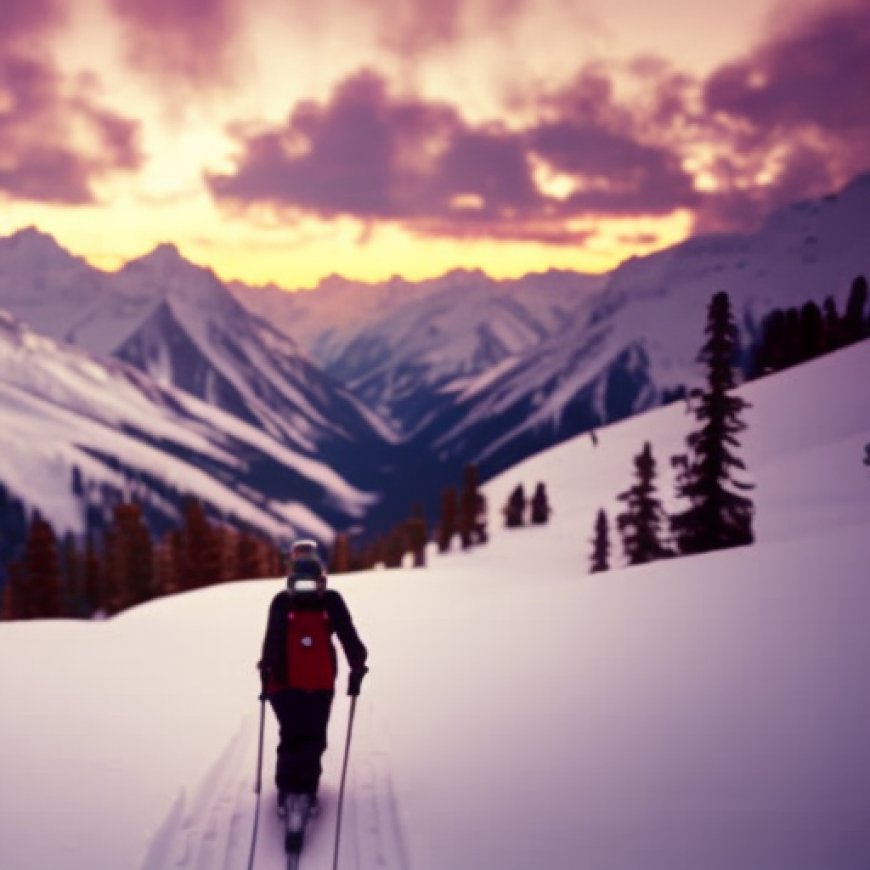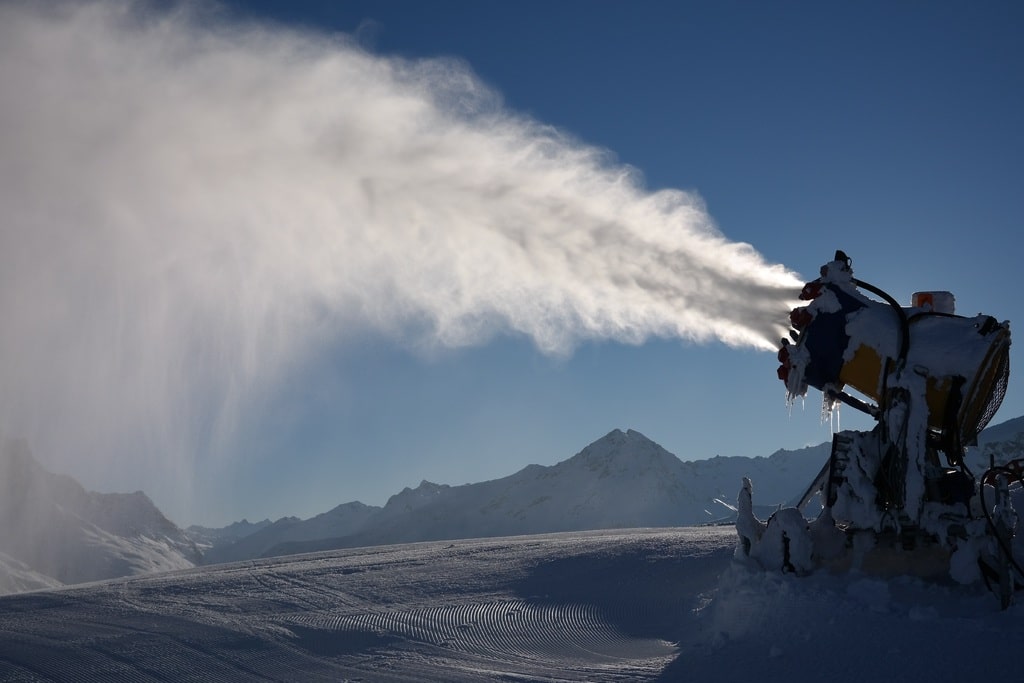7 Adaptation Strategies for Ski Resorts to Thrive in a Warmer World
7 Adaptation Strategies for Ski Resorts to Thrive in a Warmer World EARTH.ORG


Ski Resorts Adapting to Climate Change: A Report on Sustainable Strategies

Ski resorts around the world are facing unprecedented challenges due to the impacts of climate change, with rising temperatures, changing precipitation patterns, and unpredictable weather events threatening the industry. In response to these challenges, many ski resorts are implementing a variety of climate adaptation strategies to ensure their viability in a warming world.
1. Snowmaking
Perhaps one of the most well-known and used adaptation measures is the production of machine-made snow. With warmer temperatures leading to less natural snowfall, ski resorts are investing in snowmaking technology to ensure consistent snow cover on their slopes.
Snowmaking involves producing snow artificially by spraying water and compressed air into the atmosphere. This technology allows resorts to supplement natural snowfall and extend their skiing seasons. By investing in snowmaking infrastructure, ski resorts can reduce their reliance on natural snow and maintain their snow cover even in warmer winters. However, snowmaking can be energy-intensive and costly.
According to a 2023 study by the University of Waterloo, Canada and the University of Innsbruck, Austria investigating the energy usage associated with snowmaking in Canadian ski resorts, snowmakers utilize approximately 478,000 megawatt-hours of electricity – with 130,095 tonnes of associated carbon dioxide (CO2) emission, equivalent to the energy consumption of nearly 17,000 homes in a year – and 43.4 million cubic meters of water to produce artificial snow. It is also interesting to know that only about 75% of the water that goes into the snow guns is turned into snow, the rest either remains in the gun or is blown away without freezing.
- Pros: Increases reliability of ski season
- Cons: Requires significant energy and water usage
2. Slope Development
Another key adaptation measure that can be used at ski resorts is slope development. Many resorts are redesigning their slopes to accommodate for changing snow conditions and optimize snow retention. This may involve regrading slopes, widening trails, incorporating more trees to create shaded areas, or adding snow fences to retain snow and prevent erosion. By strategically developing their slopes, ski resorts can better manage their snow resources.
Some resort managers are developing new ski slopes located at higher altitudes. This is the case of Aspen Mountain, Keystone Resort and Steamboat Ski Resort in Colorado, US.
- Pros: Helps preparing slopes in a way that reduces the amount of required natural snow to operate
- Cons: Can be a costly investment and have potential negative impacts on the local ecosystem
3. Snow Farming
Another innovative and effective adaptation measure is so-called “snow farming”. This technique involves collecting and storing snow from previous winters in shaded areas or insulated structures to preserve it during the summer months for future use. By stockpiling snow in advance, ski resorts can ensure a reliable snow base even in warmer winters.
Snow farming can be particularly beneficial for ski resorts that experience unpredictable snowfall patterns or rely on early season snow to kick off their skiing seasons. By integrating snow farming practices into their operations, ski resorts can build resilience against climate variability, create a good snow base, and guarantee a consistent snow cover throughout the season.
The strategy is only now beginning to gain traction, with snow farming already practiced in countries such as Finland, Sweden, and Switzerland.
- Pros: Helps ensure a consistent snow base throughout the ski season, reduces reliance on machine-made snow, and allows ski resorts to extend their operating season
- Cons: Requires significant investment in equipment and infrastructure, and can be labor-intensive and time-consuming to manage the whole process
4. Improving Climate Forecasting
Accurate climate forecasting is crucial for ski resorts to anticipate and prepare for changing weather patterns. Ski resorts are investing in advanced weather monitoring technologies and partnering with meteorological agencies to improve their climate forecasting capabilities. By tracking weather trends and predicting snow conditions,
SDGs, Targets, and Indicators
| SDGs | Targets | Indicators |
|---|---|---|
| SDG 7: Affordable and Clean Energy | 7.2: Increase the share of renewable energy in the global energy mix | Energy consumption and carbon emissions reduction in ski resorts through the use of renewable energy sources |
| SDG 13: Climate Action | 13.1: Strengthen resilience and adaptive capacity to climate-related hazards | Implementation of climate adaptation measures in ski resorts, such as snowmaking, slope development, snow farming, climate forecasting, market diversification, industry consolidation, and operational changes |
| SDG 15: Life on Land | 15.2: Promote the implementation of sustainable management of all types of forests | Slope development strategies that incorporate more trees to create shaded areas and prevent erosion |
| SDG 17: Partnerships for the Goals | 17.17: Encourage and promote effective public, public-private, and civil society partnerships | Collaboration between ski resorts, industry partners, stakeholders, local communities, governments, and environmental organizations to implement collective adaptation measures and sustainable tourism practices |
1. Which SDGs are addressed or connected to the issues highlighted in the article?
SDG 7: Affordable and Clean Energy
The article discusses the energy-intensive nature of snowmaking in ski resorts and the associated carbon dioxide emissions. It also mentions the use of renewable energy sources to reduce the environmental impact of ski resorts.
SDG 13: Climate Action
The article focuses on the impacts of climate change on ski resorts and the need for adaptation measures to ensure their viability. It discusses various climate adaptation strategies implemented by ski resorts, such as snowmaking, slope development, snow farming, climate forecasting, market diversification, industry consolidation, and operational changes.
SDG 15: Life on Land
The article mentions slope development strategies that incorporate more trees to create shaded areas and prevent erosion. This relates to the sustainable management of forests and land in ski resorts.
SDG 17: Partnerships for the Goals
The article highlights the importance of collaboration between ski resorts, industry partners, stakeholders, local communities, governments, and environmental organizations to implement collective adaptation measures and sustainable tourism practices. This aligns with the goal of promoting effective partnerships for sustainable development.
2. What specific targets under those SDGs can be identified based on the article’s content?
Target 7.2: Increase the share of renewable energy in the global energy mix
The article mentions the use of renewable energy sources to reduce the environmental impact of ski resorts, specifically in relation to snowmaking technology and other operational changes.
Target 13.1: Strengthen resilience and adaptive capacity to climate-related hazards
The article emphasizes the need for ski resorts to implement various climate adaptation measures to adapt to changing snow conditions and ensure their viability. These measures include snowmaking, slope development, snow farming, climate forecasting, market diversification, industry consolidation, and operational changes.
Target 15.2: Promote the implementation of sustainable management of all types of forests
The article discusses slope development strategies that incorporate more trees to create shaded areas and prevent erosion. This aligns with the target of promoting sustainable management of forests and land in ski resorts.
Target 17.17: Encourage and promote effective public, public-private, and civil society partnerships
The article highlights the importance of collaboration between ski resorts, industry partners, stakeholders, local communities, governments, and environmental organizations to implement collective adaptation measures and sustainable tourism practices. This aligns with the target of promoting effective partnerships for sustainable development.
3. Are there any indicators mentioned or implied in the article that can be used to measure progress towards the identified targets?
The article mentions several indicators that can be used to measure progress towards the identified targets:
- Energy consumption and carbon emissions reduction in ski resorts through the use of renewable energy sources (SDG 7)
- Implementation of climate adaptation measures in ski resorts, such as snowmaking, slope development, snow farming, climate forecasting, market diversification, industry consolidation, and operational changes (SDG 13)
- Slope development strategies that incorporate more trees to create shaded areas and prevent erosion (SDG 15)
- Collaboration between ski resorts, industry partners, stakeholders, local communities, governments, and environmental organizations to implement collective adaptation measures and sustainable tourism practices (SDG 17)
These indicators can be used to assess the progress made by ski resorts in achieving the targets under the relevant SDGs.
4. Table: SDGs, Targets, and Indicators
| SDGs | Targets | Indicators |
|---|---|---|
| SDG 7: Affordable and Clean Energy | 7.2: Increase the share of renewable energy in the global energy mix | Energy consumption and carbon emissions reduction in ski resorts through the use of renewable energy sources |
| SDG 13: Climate Action | 13.1: Strengthen resilience and adaptive capacity to climate-related hazards | Implementation of climate adaptation measures in ski resorts, such as snowmaking, slope development, snow farming, climate forecasting, market diversification, industry consolidation, and operational changes |
| SDG 15: Life on Land | 15.2: Promote the implementation of sustainable management of all types of forests | Slope development strategies that incorporate more trees to create shaded areas and prevent erosion |
| SDG 17: Partnerships for the Goals | 17.17: Encourage and promote effective public, public-private, and civil society partnerships | Collaboration between ski resorts, industry partners, stakeholders, local communities, governments, and environmental organizations
Behold! This splendid article springs forth from the wellspring of knowledge, shaped by a wondrous proprietary AI technology that delved into a vast ocean of data, illuminating the path towards the Sustainable Development Goals. Remember that all rights are reserved by SDG Investors LLC, empowering us to champion progress together. Source: earth.org
Join us, as fellow seekers of change, on a transformative journey at https://sdgtalks.ai/welcome, where you can become a member and actively contribute to shaping a brighter future.
|








